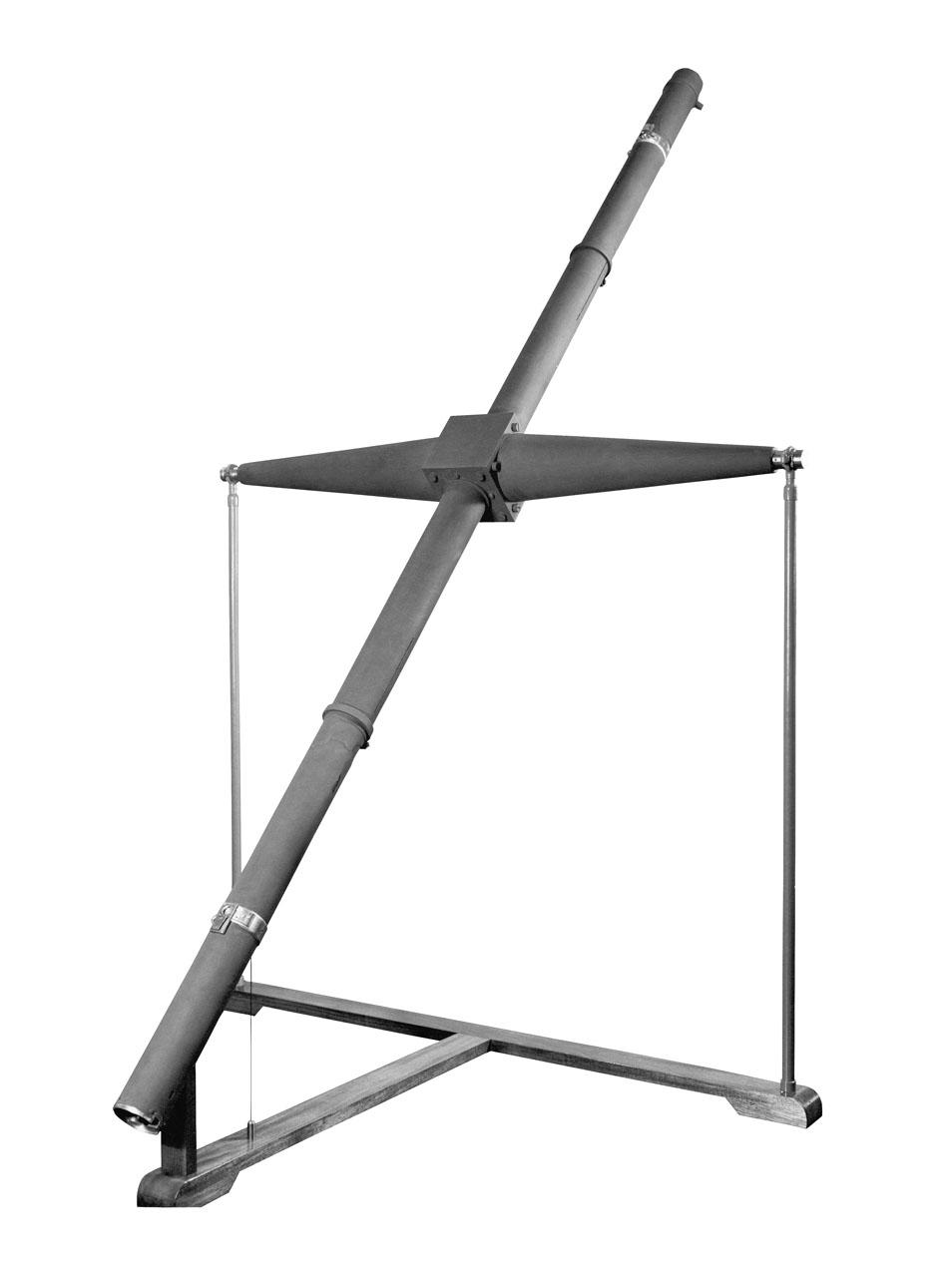Essential Information
| Location |
Royal Observatory
|
|---|---|
30 Jul 2012
A lesson quickly learned in the world of museum collections and displays - perhaps especially in history of science and technology collections - is that the appeal and aesthetics of an object only rarely match the interest of their story. It has been rightly stated that in many cases when an instrument has made its way into a museum collection, it is probably because it not much used for its ostensible function: it has been admired and collected rather than used, broken and thrown away. There are many exceptions to this rule, of course. Two of the most obvious cases are objects that have been rescued because of their association with a famous person (an item which, therefore, may or may not be attractive, may or may not have been much used) or those which have arrived at a museum not as part of an assembled collection but through the acquisition of items left by a defunct institution.

Bradley's 8-foot transit instrument (AST0980 National Maritime Museum)
There are elements of all of these points to consider when presented with this object - it is quite large (8 foot long) but rather dull and simple-looking. Its importance is not writ large and it is easily passed over. Yet it is an object that has survived because of its history and associations - it has been a relic, preserved institutionally until handed over to ownership of the National Maritime Museum. Why am I writing about it on the Longitude Project Blog? Because it is a key item in the suit of instruments used at the Royal Observatory in Greenwich to produce the astronomical data that went into the Nautical Almanac, along with the astronomical regulator and mural quadrant. Aligned north-south (i.e. on a meridian or line of longitude), it was used to measure right ascension, one of the two co-ordinates required to map the positions and motions of heavenly bodies, at the moment a star, planet, Sun or Moon crossed that local meridian. It is a transit instrument, because that moment of crossing is known astronomically as transiting. Called Bradley's 8-foot transit instrument, it was in fact used at the Observatory under the regimes of Nathaniel Bliss (briefly) and Nevil Maskelyne as well as James Bradley. It was the use of this instrument, on its piers in the Observatory's Transit Room, that defined the Greenwich meridian for 66 years. It was Maskelyne's efforts from the 1760s to ensure the observations made at Greenwich were publicly available - through regularly published volumes of Greenwich Observations and through the Nautical Almanac - that led to this meridian being one that ever-larger numbers of people used as a reference for astronomy, cartography, navigation and timekeeping. The instrument, costing £73 16s. 6d, was made in 1749 by the exceptional maker John Bird, who Richard introduced in an earlier post. When Maskelyne took over as Astronomer Royal in 1765, this and the other chief instruments by Bird and George Graham, now over 15 years old, were evidently still considered satisfactory. This is not to say there were not alterations made over its long working history. Astronomical instruments are objects of parts, subject to huge amounts of tinkering, adaptation and recycling when in use and, additionally, this famous instrument went on to have a second life as a trophy, hung on the wall of the building that housed its descents, the Troughton transit instrument and Airy Transit Circle.
Historic instruments displayed in the Transit Circle room in the 1890s. The Bradley transit is on the left, with its setting circle above the door (from Howse's 'The Buildings and Instruments'). Apologies for the poor image.
It is the trophy instrument that is with us today, stripped of many essential parts, including the original pivots on which its axis balanced, its counterpoise apparatus, illumination, plumb line and spirit level - all elements essential to the production of precise observations. Other aspects of the instrument, however, reflect working alterations and improvements. One of these was an important technological upgrading - the replacement of its original object glass (lens) in 1772 with an achromatic lens by Peter Dollond.
Other, less fundamental, tinkerings by Maskelyne have, fortunately, been indicated by the description left in Thomas Bugge's 1777 journal (the recently-published edition of which I reviewed here). Bugge noted that "In order to eliminate the influence of the solar rays on the tube, Doctor Maskelyne had covered it with white paper" but was unconvinved: "I am more inclined to think that this would have a bad effect and increase the changes of the tube by heating, because the white paper is pasted immediately on to the brass". Brugge thought that the paper would be better used as a screen, not touching the tube itself. Maskelyne may also have changed his mind, as he was clearly always a keen experimenter and observer of his instruments. In 1784, for instance, he added mahogany covers to the top of the instrument's piers to keep the sun off the pivots.
The Bradley transit instrument in a drawing by John Charnock, 1780s (PAF2928: National Maritime Museum)
Much of the history of this instrument is succinctly recorded in Derek Howse's volume on 'Buildings and Instruments' in the 1975 Greenwich Observatory (3 vols). My favourite note is pulled from the published Astronomical Observations of 1800, in which Maskelyne noted: "Just before the Sun's transit found a little spider in the tube, beyond the wires, which had made itself a web there". The spider, Howse notes, was alowed to remain there just over a week. Perhaps, given the astronomer's reliance on spiders to produce the threads used as 'wires' in the eyepieces of many telescopes, leaving it undisturbed was a small 'thank you'.